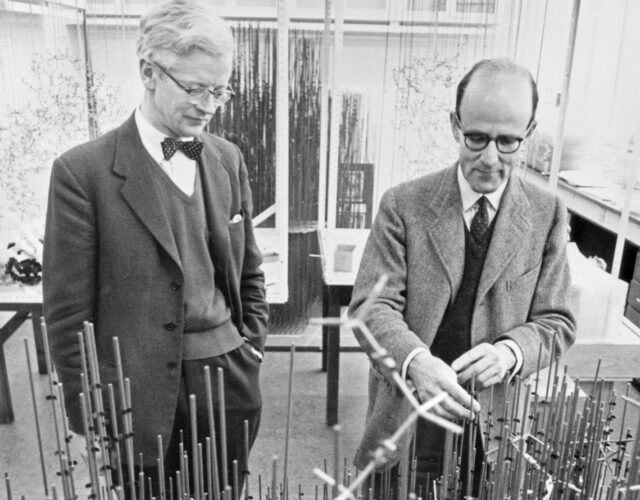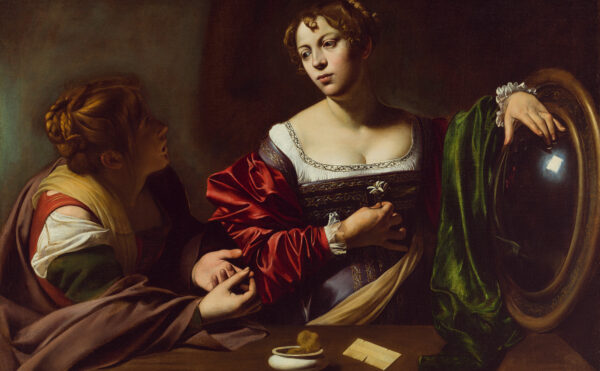Georgina Ferry. Max Perutz and the Secret of Life. Woodbury, NY: Cold Spring Harbor Laboratory Press, ix + 368 pp, $39.
Subjectivity. It has no place in the popular image of science, yet its role is keenly felt by scientists and the historians and humanists who study them. The importance of the personal in an age of bureaucracy, of the foibles and the virtues of individuals in an era of organized research, is a major theme in the histories of the modern sciences. As told by science writer and journalist Georgina Ferry, the life of crystallographer and molecular biologist Max Perutz is a wonderful example of just how important the personal and the subjective can be. Max Perutz and the Secret of Life is like the autobiography its subject never wrote, tempered with Ferry’s perceptive interpretation of Perutz’s personality and psychology and reinforced by her experience as a chronicler of the stories of molecular biology.
“In science, truth always wins.” This was a favorite aphorism of Max Perutz. Ferry invokes it to good effect as an example of Perutz’s endearing combination of optimism and naïveté. Both qualities served Perutz well—from his entry into science as a youth in Austria, to his tragicomic experiences of World War II, to his celebrated work on the structure of hemoglobin, to his leadership of the famous Laboratory of Molecular Biology at Cambridge University.
Perutz was turned on to science by a chemistry teacher whose colorful classroom experiments always worked—and made “lovely colours.” He chose to pursue chemistry, though it was an impractical career choice for the son of a well-connected Vienna business family. By 1936, when he was ready to begin research for his doctorate, Perutz left Austria, citing the politics of the lab, the regimented lives and limited intellectual horizons of the organic chemistry graduate students he knew, rather than the more troubling conventional politics of the day—the rising tide of Nazism—as his motivation for this relocation. He was recruited into crystallography almost by happenstance: the charismatic Cambridge physicist (and communist, not that Perutz cared) J. D. Bernal needed a graduate student who could pay his own way.
A German-speaking émigré, nominally Catholic and of Jewish descent, Perutz was a man without a country at the start of the war. Like many anti-Nazi refugees Perutz was interned as an enemy alien, eventually ending up in a detention camp in Canada. Although he was often the target of anti-Catholic, anti-Semitic, and anti-Deutschophone sentiments, his enthusiasm for England as his new homeland and his faith in his Cambridge colleagues was undiminished. By the war’s end he was not only welcomed back to England, but also made a citizen and even assigned to war work: Project Habbakuk, an attempt to design a “Mammoth Unsinkable Vessel with Functions of a Floating Airfield” made of ice. This unusual project, abandoned after the Allied victory in Europe, had resulted from the confluence of several quirky character traits—Perutz’s passion for all things to do with the mountains (including ice), Bernal’s unbridled imagination, and the outlandish ambition of Geoffrey Pyke, the military science adviser who proposed and lobbied for the idea
After the war Perutz returned to the work that would define his entire career, the crystallography of the oxygen-carrying protein hemoglobin. As with Project Habbakuk, and indeed his entrance into the world of Cambridge science in the first place, Perutz’s success resulted from what can be seen as naïve optimism—or alternatively, a remarkable prescience. At the outset the hemoglobin project was even more ambitious and outlandish than Project Habbakuk, something few besides Bernal (and the young Perutz) thought possible. Perutz’s success, remembered now through the lens of his 1962 Nobel Prize, was not so much a single discovery as a long whittling away at hemoglobin’s structure, a project that continued—in fact, took its greatest strides—well after 1962.
The Nobel Prize marked a turning point in Perutz’s social fortunes. At last he felt fully accepted at Cambridge, although he still never got invited to the famous parties his colleagues held, but likely would not have gone anyhow. He was, by then, head of the Laboratory of Molecular Biology. In his remarkable success in maintaining that crowded stable of scientific superstars—among them Francis Crick, Frederick Sanger, Sydney Brenner, and other Nobel laureates—we again see Perutz’s optimism and naïveté. If they were left to their own devices, unhindered by bureaucracy and overt management, he assumed, truth would win. The well-read historian will understand how much more complicated the reality of the Laboratory of Molecular Biology was, and Ferry gives just enough of a glimpse into the dense weave of Cambridge scientific politics—mostly from Perutz’s limited perspective—to fit this story into larger narratives without stretching her own thread too thin.
None of this should detract from the importance of Perutz’s accomplishments. Ferry draws elegant outlines of his scientific achievements, but technical details or the broader history of molecular biology are not the concerns of this book. Rather, Ferry has provided something that would not be so easily recoverable by scholars a generation from now. Her book is a convincing personal portrait of Max Perutz and one that enriches our understanding of scientific leadership and the management of research.




